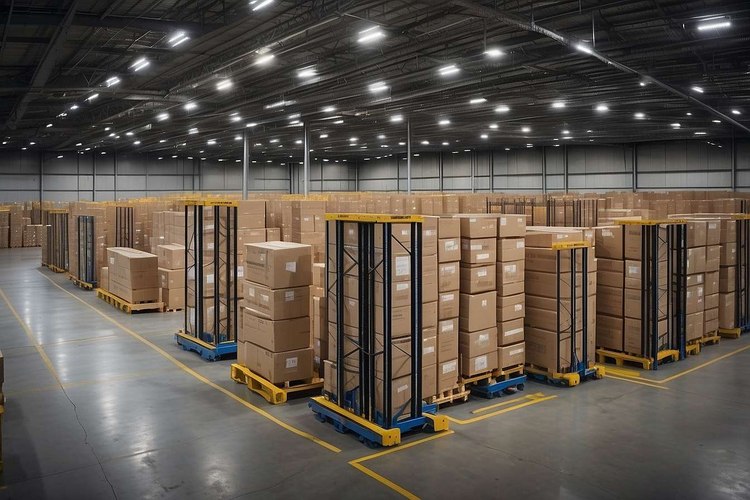Pallets for Sale: Plastic Pallets in Warehouse and Logistics
Pallets for sale are a practical purchase for businesses that move, store, or ship goods. Whether you’re replacing damaged wooden pallets or exploring alternatives, plastic pallets offer specific benefits and trade-offs worth understanding. This article explains how plastic pallets fit into operations, what to consider when buying for warehouse use, and how they influence supply chain, logistics, and shipping choices.

What are plastic pallets and how are they used?
Plastic pallets are manufactured from molded or assembled plastic materials such as high-density polyethylene (HDPE) or polypropylene (PP). They come in many designs: solid deck, ventilated deck, nestable, rackable, and foldable. Plastic pallets are often chosen where moisture resistance, consistent dimensions, and ease of cleaning are important. They can be used for a single trip, multiple reuse cycles, or in closed-loop systems where pallets return to a central point for reuse and inspection.
Many industries use plastic pallets for hygiene-sensitive environments like food, pharmaceuticals, and electronics, because plastic does not splinter, absorb contaminants, or harbor pests the way untreated wood can. When considering plastic pallets for sale, check load ratings, compatibility with forklifts and racking, and whether the design suits automatic handling systems.
How do pallets affect the supply chain?
Pallet choice affects inventory flow, handling efficiency, and compliance within the supply chain. Standardized pallet dimensions and reliable structural performance make planning easier for transportation and storage. Using consistent pallet types can reduce loading times, minimize damage to goods, and simplify cross-docking or consolidation processes. Conversely, mixed pallet types or poor pallet quality can introduce delays and increase manual handling.
Plastic pallets contribute to predictable weight distribution and dimensional stability, which can help in optimizing truck and container space. They also support traceability programs when marked or equipped with RFID tags. When evaluating pallets for sale, consider how they will integrate with your existing supply chain partners and whether any industry or customer requirements specify pallet materials or standards.
What role do pallets play in logistics?
In logistics, pallets are a key interface between storage, handling, and transport. They determine how many units can be moved per lift, how goods are stacked, and how quickly shipments can be processed. Durable pallets reduce rework and pallet-related incidents during transfer between trucks, warehouses, and distribution centers.
Plastic pallets often offer longer service life than untreated wood and resist environmental factors that degrade other materials. They can lower maintenance and disposal frequency, but initial acquisition cost and end-of-life recycling should be accounted for. When buying pallets for sale, evaluate lifecycle performance: consider expected cycles of use, repairability, and recyclability within your logistics operations.
Choosing pallets for your warehouse needs
Warehouse requirements—racking compatibility, storage density, handling equipment, and cleanliness—drive pallet selection. For rack storage, ensure the pallet is rated for static, dynamic, and racking loads. Nestable or stackable designs save space when empty, while solid, rackable pallets may be necessary for high-density racking systems.
Operational details matter: pallet entry points (2-way vs. 4-way), deck construction, and slip resistance all affect daily handling. When assessing pallets for sale, measure aisle widths, forklift types, and any conveyor or automated equipment the pallet must run on. Consider warranties, return policies, and availability from local services or suppliers in your area to support rapid replacement and consistency across your inventory.
Considerations for shipping with plastic pallets
Shipping with plastic pallets impacts carrier handling, container utilization, and compliance with international rules. Plastic pallets are often lighter and uniformly sized, which can improve container cube utilization and reduce variability when stacking. However, some shippers or regions have preferences or regulations favoring wood or certain pallet standards for export; check destination requirements before switching pallet materials.
Also factor in how pallets will be secured—strapping, stretch wrap, or banding must be compatible with the pallet surface. For intermodal or ocean shipping, confirm that your chosen pallet design tolerates the environmental conditions expected during transit. When searching for pallets for sale, request product specifications for load capacity, stackability, and any certifications relevant to shipping routes you use.
Conclusion
Selecting pallets for sale involves matching material, design, and performance to the tasks they will perform across warehouse, logistics, supply chain, and shipping activities. Plastic pallets bring advantages in hygiene, dimensional consistency, and durability, but they must be evaluated against handling equipment, racking systems, regulatory needs, and lifecycle costs. Careful specification and coordination with suppliers or local services help ensure pallets support operational efficiency without introducing unintended constraints.






